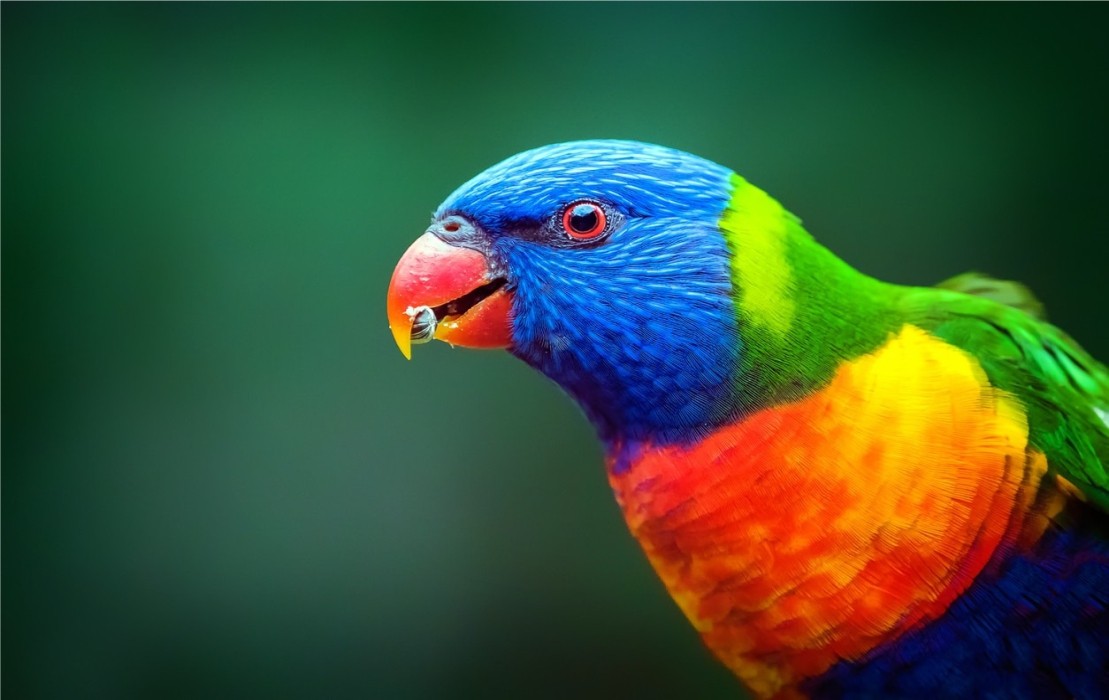Care for parakeets
The parakeet is a bird native to Australia that has become accustomed to home life. If you are thinking of bringing a pair of parakeets to your home or if you already have one, follow these steps to ensure a healthy and happy life. It will fill your house with songs!
When you get to your apartment you must place your new friends in what will be their home. He places his cage in the final place and with the feeders full so that he does not have to bother him for a while and thus he gets used to his new situation. Keep in mind that these first days animals can be nervous, so try not to scare them more. Little by little the parakeets will adapt to their new home and to our presence.
Accommodation
Size. We can house our birds in cages or aviaries, but we must always try to offer them as wide a space as possible. The best thing is that at least we have a cage of 70 cm in length, 40 in width and 50 in height, as long as it is longer horizontally than vertically. The separation between the bars should be approximately one centimeter, if it is larger the parakeets could escape (they deceive a lot with their plumage, they are really very thin and once they take their head the body also comes out) or in the worst of the cases cases get hooked. If the separation is smaller, the legs or the beak can get trapped.
Material. Their material should never be made of wood, because they are less hygienic and they do not always resist the work of the spikes. They are also usually varnished with what would endanger your health. We will instead choose more resistant metal cages, easier to clean and less attractive to parasites. The space between the bars should not exceed 1cm.
Enter items for your entertainment. The swings and ladders drive them crazy, the perches will allow them to jump from one side to the other. You can also give them sticks, twigs or lime tablets to entertain themselves while avoiding excessive nail and beak growth.
Location. The cage should be located in a quiet place, where there are no unexpected noises such as phone calls, doorbells or the television. Also, put it in a place where there are no drafts, fumes or vapors. That it is at a certain height from the ground, since birds are used to seeing things from above and that will provide them with security. The cage should be located in a bright place avoiding direct exposure to the sun's rays. If it is an animal, we will only install it in a room where life is made to provide them with the company that these sociable animals need.
It is recommended that you allow walks outside the cage for your parakeets to exercise their wings, since in a cage the ability to fly is practically nil.
Hygiene
Parakeets love to bathe, they are very neat beings and they do it with both water and sand.
Clean your home in depth at least once a month with a specific product.
Feeders and drinkers should be cleaned daily. Above all, remove the remains of food that has not been eaten because fruits and vegetables spoil quickly and we do not want our animal to live with that.
Feeding
There are special seed preparations for parakeets that will help us provide a healthy and healthy diet. It should always be a quality product with fresh seeds (check the packaging date). They even have snacks to cheer them up from time to time or for when you're teaching them something.
In order for his diet to be completely complete, we must give him some fresh, ripe fruit or vegetables that are at room temperature. But not just any food is worth it, the most recommended fruits are apple, pear, banana and grape. Regarding vegetables we can offer lettuce, endive, cabbage and carrot.
Teaching our parakeet
If we want to teach tricks to our parakeet or not to be scared of our close presence, we must start training from a young age. He begins to speak to her in a calm way and, with the days, we get closer, until he gets used to our presence. After those days, bring your hand closer to change the food and clean the cage. When the time comes you can offer him sweets by leaving your hand so that he ends up accepting them from our hand. This can take months of work and the intention is to make our presence alter our animals as much as possible.
If we want to teach him to speak, we will have to treat him the same way, repeating the same word over and over again. To be able to always be by the same person and avoiding distractions. If we see that he ignores us, it is useless to continue. Nor can we teach you anything in the company of other parakeets. Also, not all parakeets learn to speak.
Diseases
Despite their delicate appearance, parakeets are quite resistant birds as long as they are given the proper care but, like all living beings, they can fall ill. If you notice any of the symptoms that we detail below, do not wait and take him to an expert bird veterinarian:
Symptoms. Eat or drink excessively. He moves little, is downcast and moves into a corner. Have ruffled, dingy, ruffled feathers, or lose feathers. Have drooping wings, puffy eyes, or sit huddled and frequently hide head under them. You breathe with difficulty, cough, sneeze, or release a nasal discharge. Have swollen legs or belly. That the stool stains the feathers around the cloaca, evacuates with difficulty or has animal diarrhea.


Leave a Reply Cancel Reply